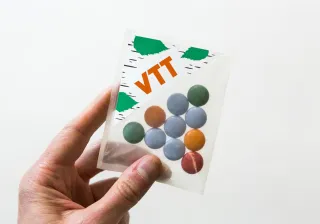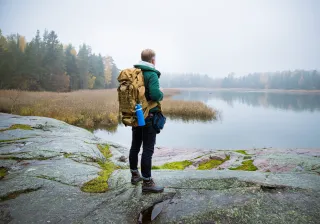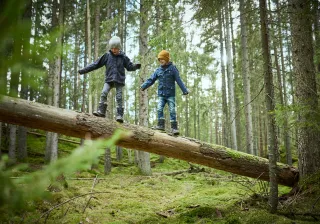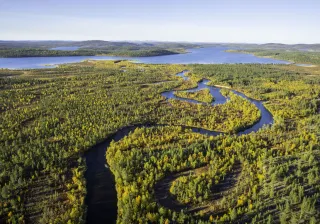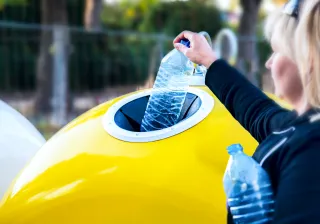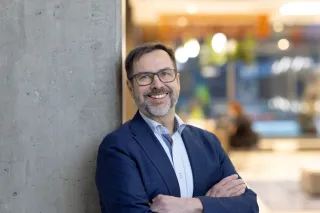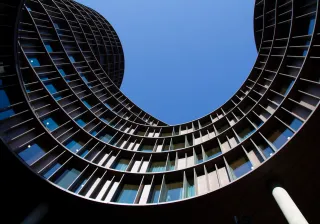The emergent new plastic economy could correct bad consumption habits while creating new business opportunities for forerunner companies. VTT is developing renewable material solutions for replacing fossil-based plastics in packaging as well as new technologies for recycling.
Having been around for only a little over a century, plastics have quickly become ubiquitous in global society and commerce. In packaging in particular, plastics have many benefits. They meet the high standards for hygiene and durability needed for global value chains, especially in the cosmetics and food industries, while still enabling relatively low-cost and scalable solutions.
The excellence and cost-efficiency that plastics have reigned with have, however, led to their overproduction: the amount of plastics made of fossil raw materials is about to reach 400 million tonnes and is expected to grow threefold by the end of 2050. The huge amount of plastics leaking into the environment has become a major threat to natural ecosystems and human well-being. As traditional plastics are fossil-based, their production and after-use incineration also cause significant greenhouse gas emissions that contribute to climate change.
– We do need plastics to fulfil basic human needs: for instance our global food supply and transport depend on them. However, we need to develop a functional recycling system for plastics: one that doesn't treat all plastics as one mass, but takes into account all the different types of plastics and how they can be sorted, reused and recycled, says Research Professor Ali Harlin from VTT.
New, long-term value from plastics
Through the years, plastic packaging solutions have shown high performance in their core task – protecting their contents. The new challenge for companies aspiring to lead the new plastic economy is to find alternative materials and create effective recycling loops that also protect the environment.
According to VTT's plastics vision, the negative environmental impacts of plastic packaging can be reduced by half by 2030. This can be achieved through the joint efforts of several players of the new plastic economy: consumer brands, packaging producers, recycling companies, technology producers, policy-makers as well as research organisations and academia.
The aim is to create new, long-term systemic value for plastic materials by fostering a functional after-use economy, drastically reducing leakage and decoupling plastics from fossil feedstocks.
Together with its clients, VTT's research and development seeks solutions for alternative renewable materials that can replace fossil-based plastics in packaging as well as new, improved methods and technologies for recycling plastics.
– We at VTT have deep scientific understanding across different fields such as energy, raw materials and chemistry. That helps us discover new solutions, that are not based on a single technology, but see the plastics system as a whole, Harlin explains.
New technologies are unlocking new opportunities in areas such as material design, separation technology, reprocessing technology and renewably sourced and biodegradable plastics. These solutions can pave the way for a better tomorrow, with lucrative business opportunities and a cleaner planet.
Alternative materials and new combinations
Polystyrene (PS) is an example of a popular plastic packaging material for which effective recycling processes have not yet been created. Many PS applications are contaminated due to the fact that they are used to store food. If the barriers for effective and economically viable collection, sorting, cleaning and recycling of polystyrene cannot be overcome, alternative packaging solutions are the way forward.
– We need replacing materials for traditional plastics. We believe that as much as half of all plastics could be made from renewable, bio-based fibres, Harlin says.
VTT's award-winning nanocellulose film, for example, has outstanding oxygen barrier properties thanks to its densely packed structure, while being a 100% renewable and biodegradable material. It is suited for a range of high-performance packaging needs as well as printable electronics or low-cost diagnostics.
According to VTT's research, traditional plastics and alternative renewable fibre materials can even be used simultaneously to achieve more efficient packaging solutions. While fibre materials can protect products form mechanical strain, plastics can be used to protect the products from contact with moisture and air. Food packages then additionally require a protective layer to separate the food from a mechanically recycled material. Creating the best solutions requires open-minded product design that takes the recyclability of each material into account. Besides that, it also requires a change in our current consumption patterns.


